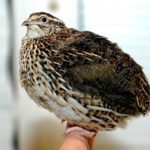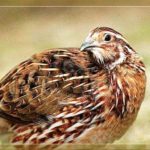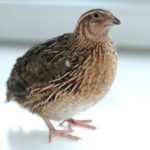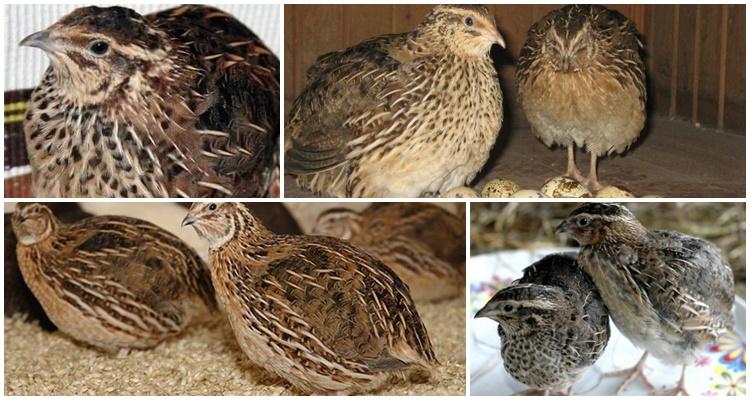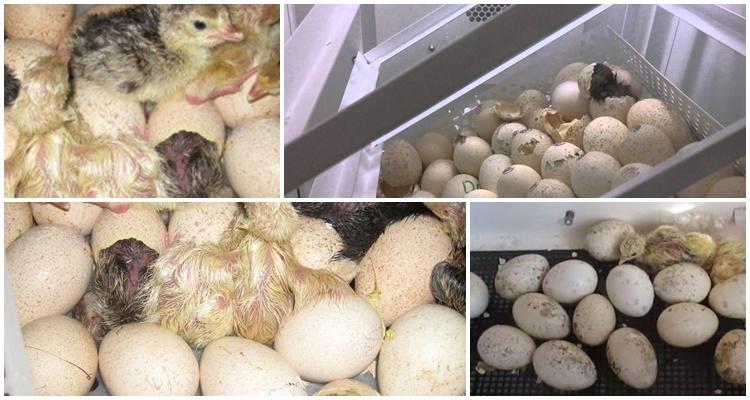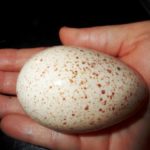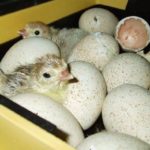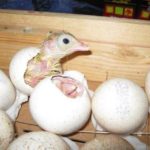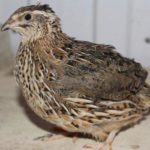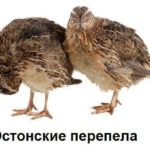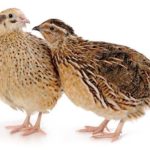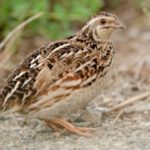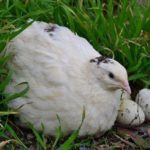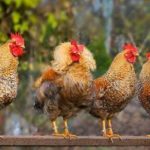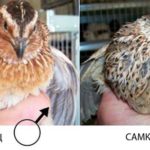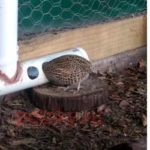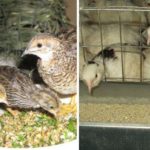Many quail breeds have recently been bred in Russia. For example, Estonian quails have been brought into the country and bred since the late 2000s. The breed is popular among private poultry farmers. Let's consider the description, advantages and disadvantages, productive characteristics of the breed. How to keep, feed and breed purebred birds in households.
- Breeding
- Appearance and performance characteristics of poultry
- Advantages and disadvantages of the breed
- How to care for and support Estonians?
- Feeding quails
- Breeding and Incubation
- Reproduction
- Selecting eggs for incubation
- Features of breeding for meat
- Frequent illnesses
- Where to buy and how much does a bird cost?
Breeding
The Estonian breed is based on two other breeds – Japanese and Pharaoh.The new variety was bred with the aim of producing larger and more productive meat-egg poultry. As a result, a breed emerged that did not lose the potential of its parents, but acquired valuable characteristics - carcass weight increased by 40-50%, chick survival rate increased to 98%. Estonian quail meat is tastier, a little fattier, but looks attractive.
Appearance and performance characteristics of poultry
The plumage of quails is similar to the color of wild birds, feathers of different shades of brown, pronounced stripes on the body. Estonian females are 20-25% larger than males. Birds of this breed are active, but shy; they are frightened by sudden sounds and movements.
Advantages and disadvantages of the breed
As you can see, the disadvantages of the breed are insignificant and do not give breeders a reason to refuse to breed the breed.
How to care for and support Estonians?
Estonian quails are kept in cages in any suitable room. A standard cage is 1 m long, 0.5 m wide and 0.3 m high. It can accommodate 2-3 dozen birds.
Keeping warm is important for quails; the room temperature should be maintained at 22-25 °C. Already at 15 ˚С egg production drops, and at 30 ˚С quails can get heat stroke. At any time of the year, in the room where the cage is located, the ventilation system must be running or the window must be open. It is important to ensure that there are no drafts.
Lighting should be dim; bright light irritates birds, increases aggressiveness, and provokes pecking. At 15 sq. m. room you need to place 1 lamp with a power of 20 W. The duration of daylight hours for quails is 16 hours; if it is shorter, females will reduce productivity. Humidity level – 60-70%. When the air is dry, birds lose their feathers, become thirsty, and eat little.
Feeding quails
Quails of the Estonian breed are meat-egg breeders, so they must receive nutrients to grow meat and form eggs. The livestock is fed with compound feed or, if you want to get more tasty and environmentally friendly meat and eggs, with self-prepared grain mash. The composition of the mixtures includes not only grains of various cereals and legumes, but also waste from their processing, vegetables and root vegetables, which need to be grated on a fine grater. To these ingredients add fresh herbs, as well as chalk, shell rock or premixes, which contain all the necessary mineral components.
It is convenient and profitable to feed laying female quails with feed specifically designed for laying hens. It contains components that stimulate egg production, and also contains calcium, which makes the shell strong. Feed consumption for 1 Estonian quail is 35 g per day.
Breeding and Incubation
You can distinguish a male from a female by external characteristics and plumage already at one month of age. The feathers on the chest of males are a uniform red or ocher-yellow color, without spots. Their head and beak are larger than those of females. The body structure of quails is more graceful, the plumage on the chest has dark spots.
In adult birds, sex can be determined by the gland, which in males is located near the cloaca. It looks like a tubercle.Females do not have such a gland. For purebred breeding, only purebred Estonian males and females should be selected.
Reproduction
At home, quails do not incubate eggs themselves. The quail are hatched in an incubator. To obtain fertilized incubation material from the livestock, families of 1 male and 4-5 females are formed. Under such conditions, egg fertilization reaches 75-80%.
Selecting eggs for incubation
Eggs suitable for incubation are collected within a week and must be fresh. Select large and above average in size, with intact and strong shells. Its color and structure should be normal. A regular incubator for home use is suitable for breeding Estonian quails. Incubation mode: in the first 1.5 weeks, maintain a temperature of 37.7-37.8 °C and humidity within 55-65%. Then reduce the humidity to 40-45%. For the first 2 weeks you need to turn the eggs, then this is not necessary.
Then set the temperature to 37.3 °C, raise the humidity to 75%. On the 16th-17th day the quails hatch. This process takes them 1-3 days. You cannot interfere and help the chicks come out of their shells; they must do it themselves. The hatchability rate of Estonian quails is high - 85-90%.
After all Estonian quail chicks have hatched, they are placed in a brooder where they are raised until they are 3 weeks old. A red lamp is hung above the quails, which will warm and illuminate them. In the first 5 days, the temperature is set at 35.5-36 °C, then for 9-11 days - 32.5-33.5 °C, after which it is gradually reduced to 25 °C. The first 2 days are fed on a piece of paper, then the food is poured into a shallow feeder. Place drinking bowls with clean warm water in the brooder.The chicks are first fed 5-6 times a day, and from 3 weeks they are transferred to 3 feedings a day.
Features of breeding for meat
Estonian quails grow quickly and begin laying eggs as early as 1.5 months. They are raised for meat for up to 3.5 months. The best food for broilers is compound feed. Females and males are kept and fed separately, in different cages. To do this, determine the sex of each individual and separate them. When kept separately, Estonian quails eat better, behave calmly, and gain weight faster. In the room with the cages, you can leave dim light so that the quail can always see the food. Feed and water should be available to birds at all times.
Frequent illnesses
When Estonian quails are kept together, infectious diseases are common. The likelihood of their appearance and spread is higher if the maintenance rules are not followed. Pathogens are spread through dirty bedding, food and water. To prevent the development of diseases and digestive disorders, birds must be treated with antibiotics. And if the disease has already developed, begin treatment immediately. In the absence of proper therapy, you can lose part of the livestock.
Parasites - helminths, lice, and feather eaters - also pose a danger to Estonian quails. They oppress birds, causing a decrease in productivity. In order not to wait for this to happen, it is necessary to periodically treat the livestock with anthelmintic drugs and agents against external parasites.
Where to buy and how much does a bird cost?
Young animals, hatching eggs, and adult Estonian quail birds can be purchased at breeding farms that breed the breed. There you can also obtain veterinary certificates confirming that the birds are healthy.The price for 1 quail reaches 50 rubles, however, each seller has a different price, so you need to check the prices before purchasing.
It is recommended to buy Estonian quails only from breeding farms and not from private individuals. The farms have a guarantee that the birds are purebred, and from them it is possible to obtain the quantity of products declared by the breeders.
Quails of the Estonian breed can be classified as promising varieties that can be chosen by private poultry farmers for home breeding. You can keep a small livestock for your own needs, providing yourself with meat and quail eggs. Many poultry farmers build a business on quail breeding and open farms. When properly organized, raising poultry brings profit and pleasure.

